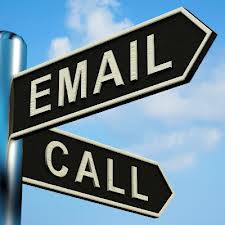A near-constant theme in my interactions with clients and other attorneys is the relative merits of various modes of communication — email, phone or in-person meetings. After a long email chain, someone will get frustrated and say, “Why don’t we just get on the phone and figure this out?” But those same people will, on another occasion, dial into a conference call, quickly get bored, and hone their skills at computer Solitaire.
 On balance, the advent of email has been a hugely beneficial development in the transactional law world. The most important benefit of email, to me, is that it can reduce interruptions in your daily routine, which can adversely affect productivity, unless of course you insist on monitoring your email on a second-by-second basis. But most reasonable people don’t expect an immediate reply to an email, so unlike an unscheduled call, the expectation is that you’ll respond when convenient to you, within reason.
On balance, the advent of email has been a hugely beneficial development in the transactional law world. The most important benefit of email, to me, is that it can reduce interruptions in your daily routine, which can adversely affect productivity, unless of course you insist on monitoring your email on a second-by-second basis. But most reasonable people don’t expect an immediate reply to an email, so unlike an unscheduled call, the expectation is that you’ll respond when convenient to you, within reason.
Email and related technology has also obviated the need for a great deal of business travel. The due diligence trips of yore are now done via uploads to virtual data rooms, and the majority of my closings are done by email exchanges of PDF signatures. Finally, email provides an informal record of interactions, enabling you to refresh your recollection on points communicated some time ago that might be forgotten if discussed verbally.
Most people agree, however, that there are appropriate times to get on the phone or meet. For one thing, it’s good to have some element of direct human contact, at least once in a while. At times, delivering a message that is not likely to be well-received is better done with a more personal touch than email can offer. But often the all-hands meeting is unrealistically viewed as a panacea, i.e., you’ll often hear “let’s just get everyone in a room, and no one leaves until we have a deal.” In reality, some of the matters discussed in the meeting may require some follow-up work or thought.